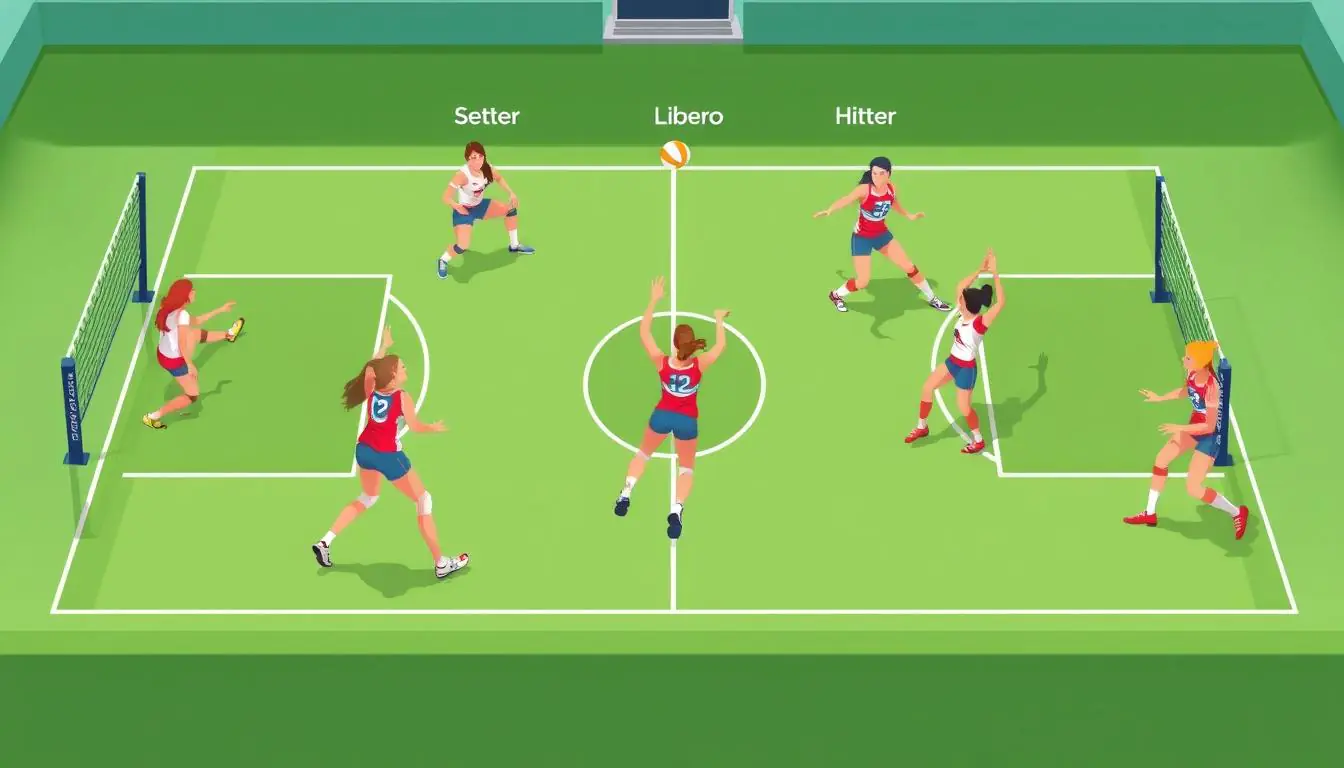We’re excited to help you understand volleyball and its team positions. You’ll learn about six key roles: outside hitter, opposite hitter, libero, middle blocker, setter, and defensive specialist. Each role is vital for the team’s success. Knowing their duties is key to mastering the game.
Imagine being part of a team that works together to beat opponents. That’s what makes volleyball exciting! With knowledge of volleyball positions, you’ll see the game in a new light. So, let’s start this journey to mastering the game.
Key Takeaways
- There are six key positions in volleyball: outside hitter, opposite hitter, libero, middle blocker, setter, and defensive specialist.
- Each position has unique responsibilities and contributes to the team’s success.
- Understanding volleyball player positions is key to mastering the game.
- A well-coordinated team can outmaneuver opponents.
- Mastering the game requires practice, patience, and dedication.
- Volleyball teams have 10 to 14 players, with at least two for each position.
- Good communication is essential for successful gameplay.
Introduction
Exploring volleyball means learning about the volleyball roles and positions. Each role has its own duties and needs. Knowing this helps us enjoy the game more. We’ll cover the basics of volleyball positions, including the court layout and how players move.
The volleyball court is split into six zones, each for a specific role. A numbering system helps identify player spots quickly. These basics are key to understanding how each role works together.
Some important volleyball roles include:
* The setter, who sets up attacks
* The outside hitter, the main attacker
* The middle blocker, a key defender
* The libero, a defensive specialist
* The opposite hitter, who blocks and attacks from the right
* The defensive specialist, focused on back-row defense and serve receive
Knowing these volleyball roles makes the game more enjoyable. Next, we’ll look at each role in more detail. We’ll explore their duties, common actions, and expert tips.
Core Positions
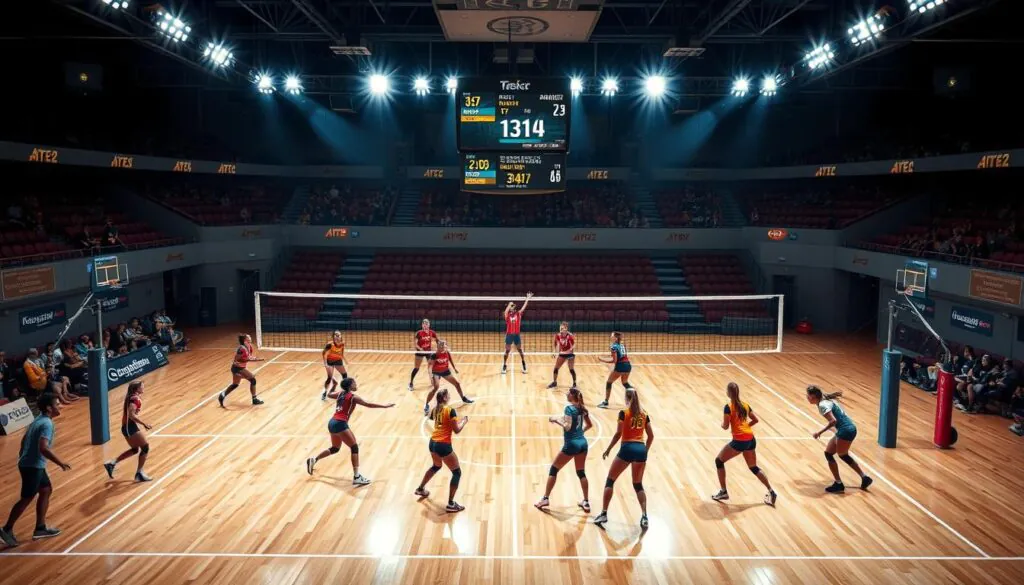
In volleyball, understanding the core positions is key. Each player has a unique role that’s vital for success. The setter, often called the team’s quarterback, is at the heart of this. They distribute the ball and decide the team’s attack direction.
The setter’s role is critical. They need great ball control and quick thinking. They also must communicate well to lead the team. In volleyball, setters play positions 1 and 9 in the back row and position 2 in the front row.
Role as Team Quarterback
The setter is like the team’s offensive coordinator. They orchestrate plays and set up attacks. They must read the game and make fast decisions based on the opponent’s defense and teammates’ positions.
Technical Requirements
To be a good setter, technical skills are essential. They need precise ball control and the ability to set the ball well for attackers. They also must have good footwork and move quickly around the court.
Communication Skills
Communication is vital for a setter. They must lead the team and keep in touch with teammates. This includes calling plays, signaling, and giving feedback. By mastering these skills, a setter becomes a key part of their team’s success.
Outside Hitter

The outside hitter is key in volleyball, attacking from the front and defending from the back. They need physical strength, quick reflexes, and sharp thinking. As a main player in volleyball team roles, they play on the front-left side of the court.
Outside hitters must have strong hitting, quick movements, and precise passing. They also need to read the game well, predict opponents’ moves, and make smart choices fast. Understanding the game, including opponents’ strengths and weaknesses, is essential.
Here are some key traits and skills for outside hitters:
- Height and agility to jump high and cover the court
- Power and speed to hit the ball effectively
- Strong eye contact and communication skills to work with teammates
- Right-handed advantage to hit the ball with precision
By mastering these skills, players can greatly help their team. They become a key part of the team’s success in volleyball team roles and volleyball offensive positions.
| Skill | Importance |
|---|---|
| Power hitting | High |
| Agile movement | High |
| Precision passing | Medium |
Middle Blocker
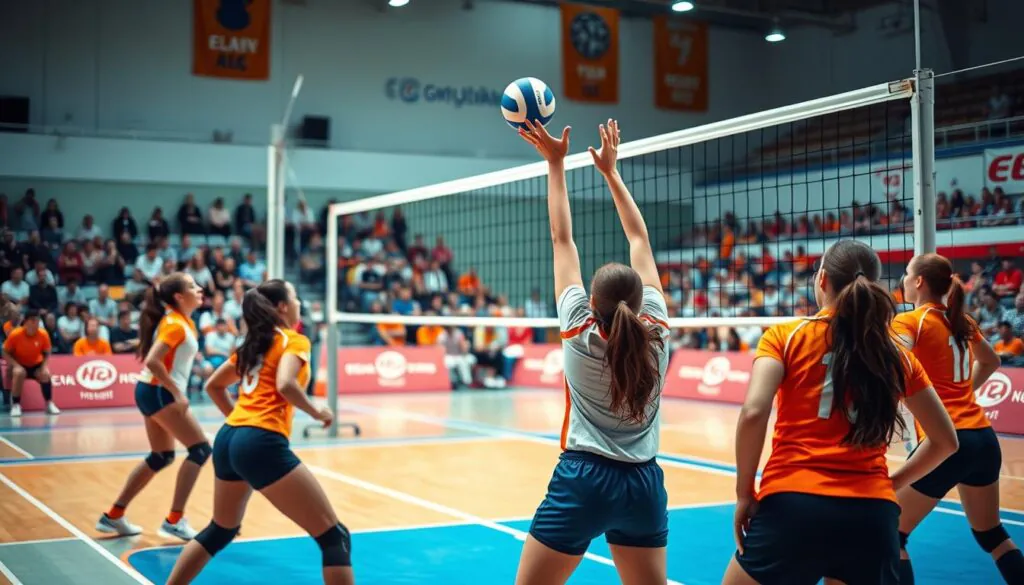
The middle blocker is key in volleyball, playing a big role in both offense and defense. They lead the team’s defense at the net, blocking attacks and disrupting the opponent’s rhythm. They also execute quick attacks, needing precise timing and coordination with the setter.
The middle blocker is usually the tallest player, using their height to block and jump high. Their agility, timing, and spatial awareness are key for blocking attacks well.
Some important traits of a good middle blocker include:
- Height and athleticism for blocking and attacking
- Excellent timing and spatial awareness for blocking
- Ability to do quick attacks and work with the setter
Understanding the middle blocker’s role helps you see the vertical game’s importance in volleyball. Their defensive and offensive skills make them essential for any team.
Opposite Hitter
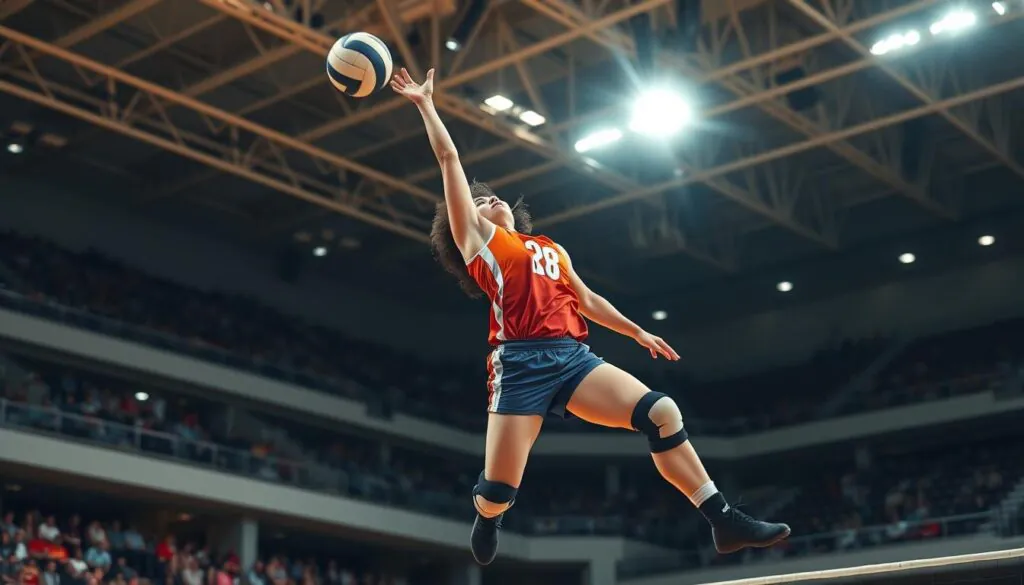
We’re excited to explore the role of the opposite hitter in volleyball. This position needs a mix of skills and flexibility. You’ll see how the opposite hitter helps the team’s strategy, focusing on offensive positions.
The opposite hitter is often the second attacker, hitting from the back row. They need great technical skills and game reading abilities. Volleyball advisors say they must hit, block, and set well, making them key to the team.
Some important skills for an opposite hitter include:
- Excellent blocking abilities
- Strong setting skills
- Good passing and digging abilities
- Quick feet and flexibility in playing different roles
Understanding the opposite hitter’s role in volleyball is key. It shows the game’s complexity and strategy. Knowing their responsibilities and skills helps appreciate the game more.
The opposite hitter has an advantage in hitting due to their training. But, they must follow rules like not touching the net or blocking serves. Mastering these skills makes them a vital part of the team’s success.
Libero
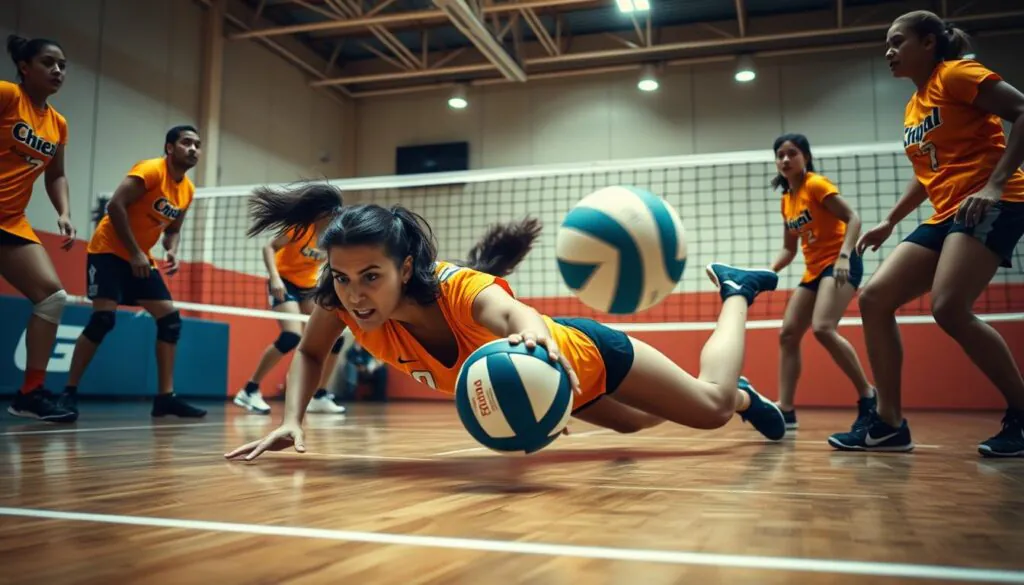
The libero is a key player in volleyball’s defense. They are experts at passing, digging, and reading opponents’ attacks. Their job is to cover the court and support the team’s defense.
The libero focuses on passing and digging the ball well. They must be energetic and have lots of stamina. Liberos also lead the team, guiding and motivating others. Important skills for a libero include:
- Digging and passing
- Consistency and ball handling
- Speed and agility
The libero is essential to the team’s defense. They handle most of the team’s passes and have many successful defensive plays. Knowing the libero’s role helps understand the importance of defense in volleyball.
Specialized Roles
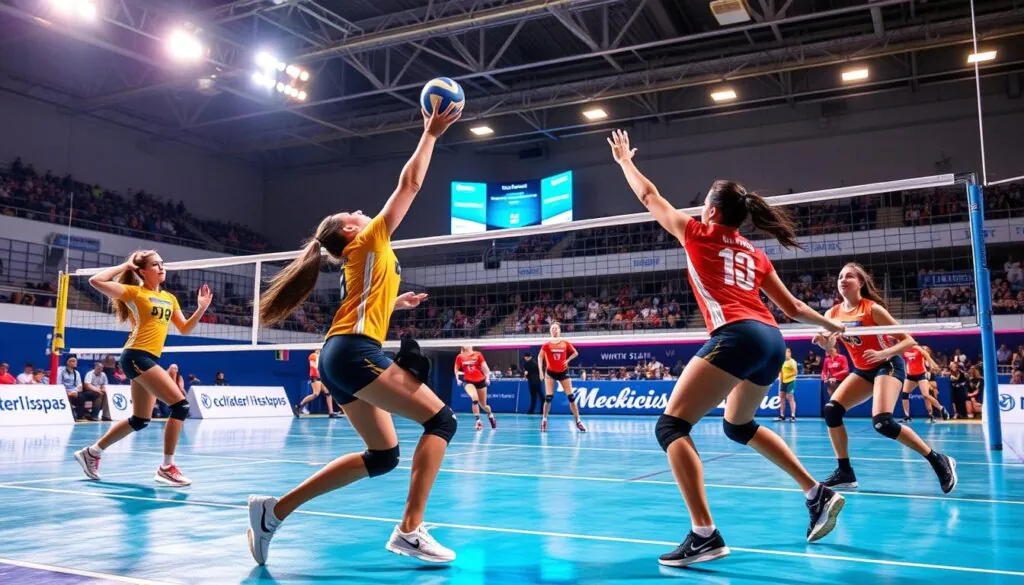
Exploring volleyball, we find many volleyball team roles that help teams win. The defensive specialist is one, focusing on back-row defense and passing. They need top-notch technical skills like ball control and knowing the court.
In athletic positions in volleyball, defensive specialists boost passing and defense. Coaches pick them for key game moments. Knowing these roles helps us see volleyball’s strategy and how teams adjust during games.
Some key traits of a defensive specialist include:
- Exceptional passing and defensive skills
- Ability to read the game and make strategic decisions
- Strong communication skills to coordinate with teammates
Understanding volleyball’s specialized roles makes the game more exciting. Whether playing, coaching, or just watching, knowing volleyball team roles and athletic positions in volleyball makes the game more fun and meaningful.
Serving Specialist
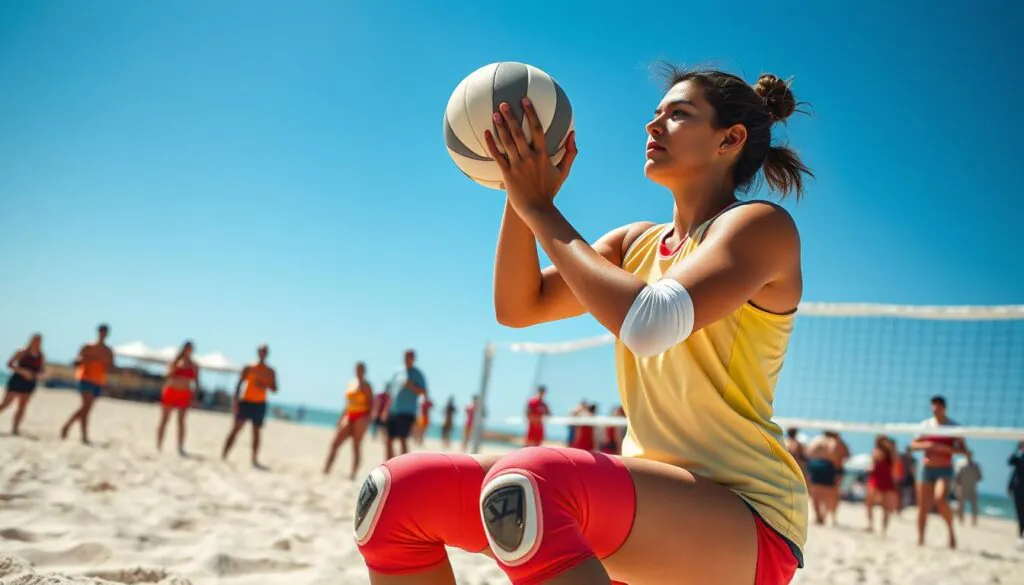
Exploring volleyball positions, we find the serving specialist’s role key. They serve and then leave the game when the other team scores. Their main task is to serve strong and smart, aiming to upset the opponent’s flow and score points.
A serving specialist must be skilled in different serves. They need to master floaters, jump serves, and topspin serves. These serves are hard for opponents to handle. This skill makes them a big help to their team, boosting their strategy.
Some key traits of a serving specialist include:
- Strong serving technique
- Ability to serve with power and precision
- Good court vision to identify opponent weaknesses
Understanding the serving specialist’s role shows how serving is vital in volleyball. It’s not just for scoring but also for defense. Knowing this can make you appreciate the game more, whether you play, coach, or just watch.
Team Dynamics
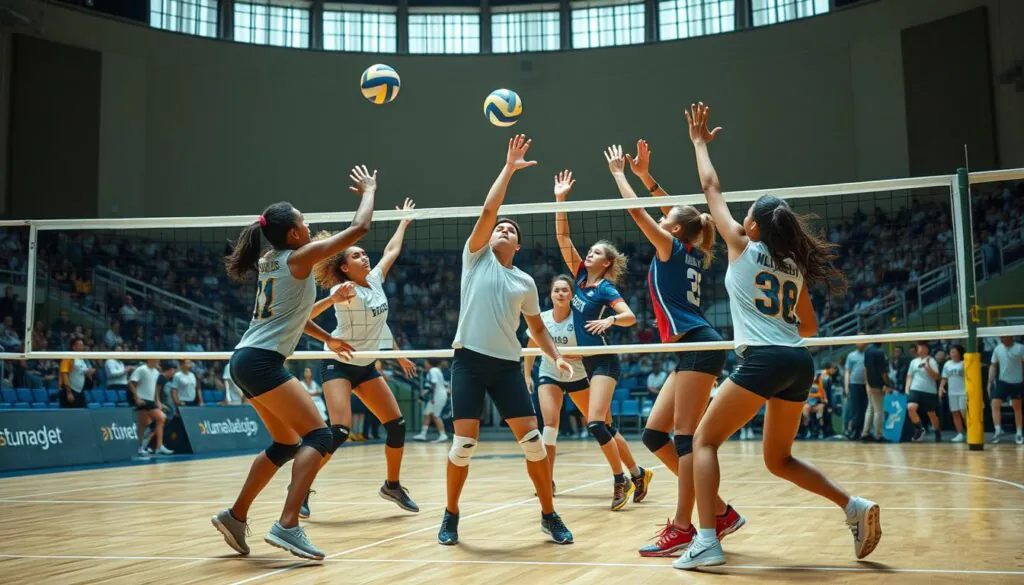
In volleyball, understanding how positions work together is key. Teamwork is vital, and each player has a critical role. The volleyball team roles are designed to work together, making the team stronger.
Teams must think about their opponents’ strengths and weaknesses when planning volleyball strategies. By knowing the volleyball team roles and how they work together, teams can outsmart their opponents. Important parts of team dynamics include:
- Offensive combinations: Quick sets, slides, and back-row attacks need players to work together.
- Defensive formations: Teams change their setup based on the opponent’s plan, using volleyball strategies to get ahead.
- Communication patterns: Teams use signs and words to coordinate their actions on the court.
By mastering these team dynamics, players can enhance their game and help their team win. As shown, and volleyball strategies are key to winning on the court.
Physical Requirements
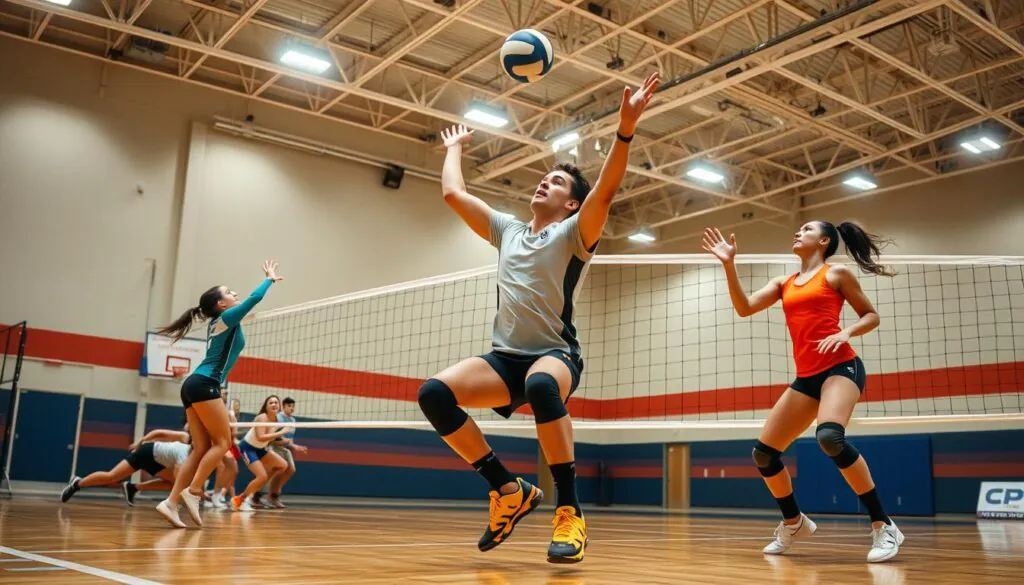
Exploring volleyball, we see the need for different physical skills in each role. Each position in volleyball requires unique physical traits. Mastering these can greatly boost your game.
Height is key in volleyball. Taller players do well in roles like middle blocker. They use their height to block shots and spike the ball. But, roles like libero focus more on agility and quick thinking.
Important physical skills for volleyball players include:
- Jumping power and endurance
- Lateral quickness and agility
- Strong core and leg muscles
These skills are essential for skills like spiking, blocking, and digging. By training for your specific role, you can get better and help your team more.
Knowing what physical skills each volleyball role needs is key to doing well. By focusing on these, you can reach your full ability and have a better time playing.
Advanced Concepts
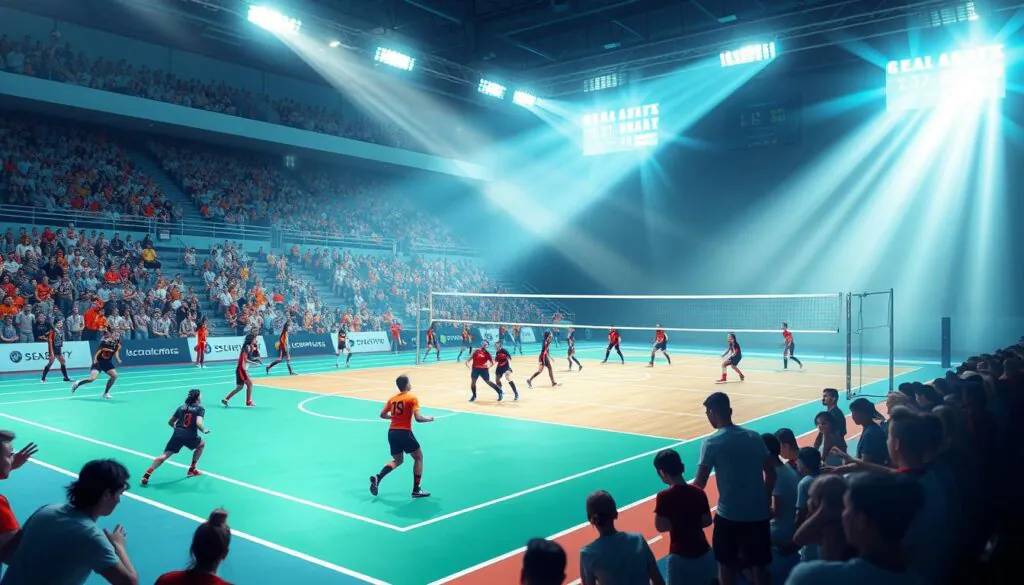
Exploring advanced volleyball concepts, we focus on volleyball strategies and volleyball roles. These are key to improving team performance. Developing players who can play multiple positions is essential. It gives teams the flexibility to adapt to different situations.
This flexibility helps coaches create surprises for opponents. For example, the 6-3 offense allows for three hybrid players and three attackers. This setup makes serve-receive easier and reduces the need for position changes during play.
The 6-3 system has several benefits:
- It makes players versatile and skilled in multiple areas.
- Players get to try out different positions, improving communication and adaptability.
- Coaches can better understand player strengths in various roles.
Understanding these advanced concepts helps you see how top teams use volleyball strategies and player talents. Success comes from using volleyball roles and strategies effectively.
| Volleyball Position | Key Responsibilities |
|---|---|
| Setter | Setting the ball for attackers, controlling the tempo of the game |
| Attacker | Scoring points, creating scoring opportunities |
Modern Evolution
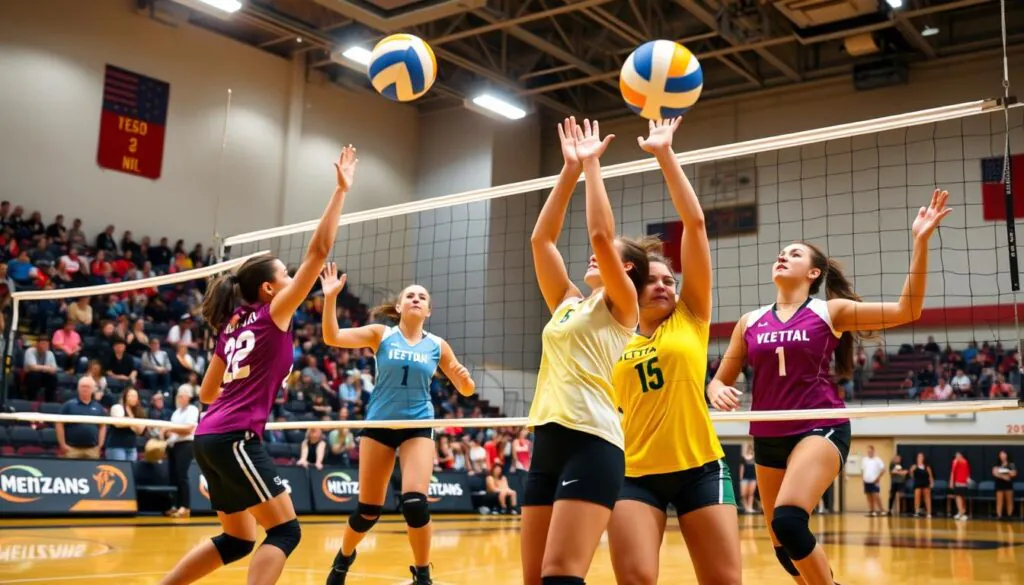
Exploring the modern evolution of volleyball shows how volleyball positions explained have changed. New technologies and training methods have helped players master their roles. This has led to better volleyball strategies.
Modern volleyball focuses more on back-row attacking and serve reception. These changes have made teams more adaptable and strategic. By learning these trends, players can improve and excel in the game.
Here are some key factors driving the modern evolution of volleyball:
- Advances in technology and analytics
- Increased emphasis on player development and training
- Growing importance of serve reception and back-row attacking
The future of volleyball looks exciting. With new technologies and training, we’ll see more innovative volleyball strategies and thrilling plays.
| Position | Key Responsibilities |
|---|---|
| Setter | Setting, blocking, and defense |
| Outside Hitter | Attacking, blocking, and defense |
| Libero | Defense and reception |
Conclusion
As we wrap up our guide on mastering the game: a complete guide to volleyball positions and player roles, we hope you now see volleyball’s strategic depth. We’ve covered everything from the volleyball positions explained to advanced team strategies. This journey has shown how each player’s role is vital on the court.
Being a great volleyball player or coach is more than just knowing the basics. It’s about understanding how all positions fit together and the skills needed. This knowledge helps you improve your game or lead your team to success.
Keep learning, try new things, and stay open to change. Volleyball’s beauty is in its endless growth and creativity. With hard work, teamwork, and a love for learning, you’ll master the game and take your volleyball to new heights.
